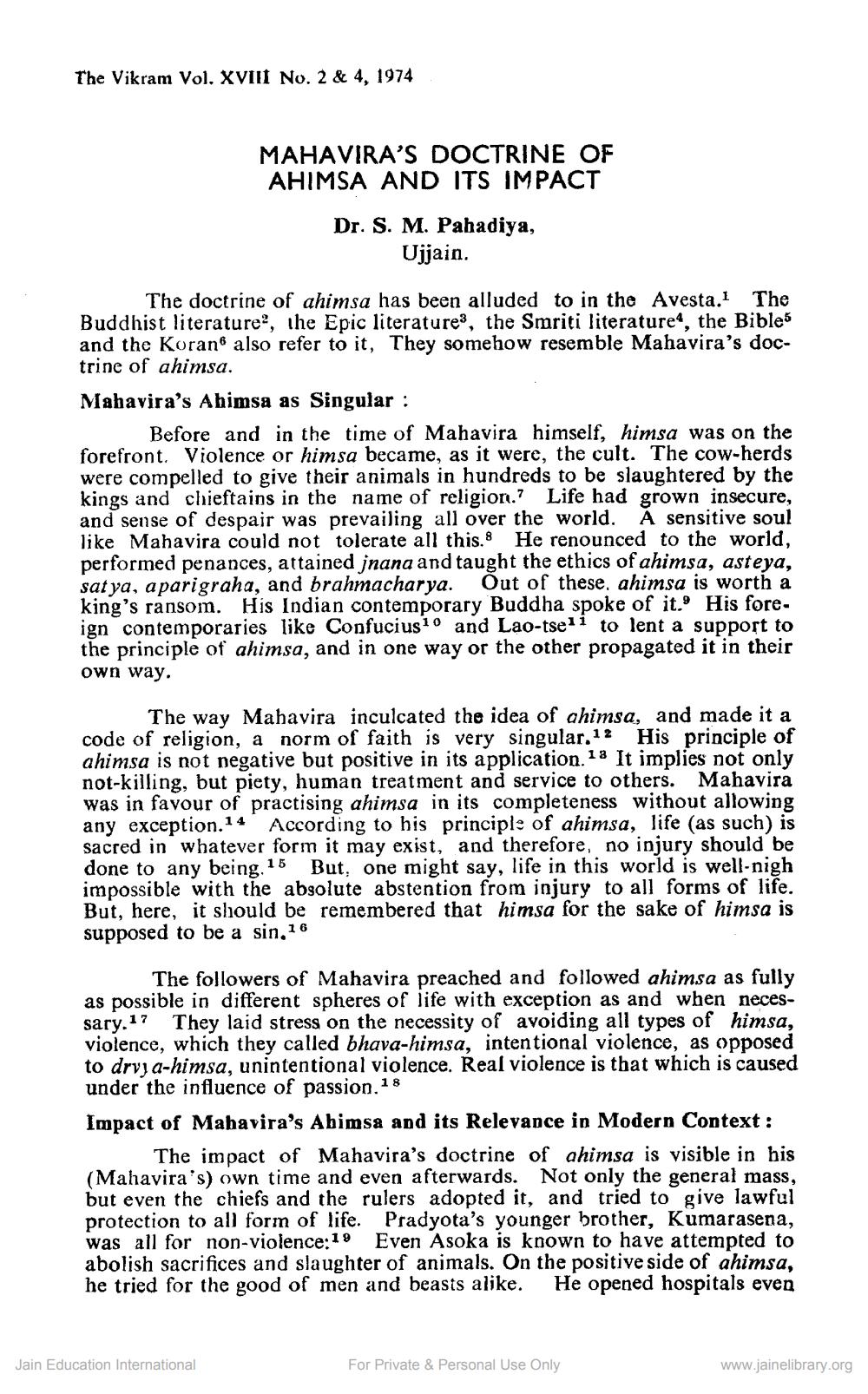________________
The Vikram Vol. XVIII No. 2 & 4, 1974
MAHAVIRA'S DOCTRINE OF AHIMSA AND ITS IMPACT Dr. S. M. Pahadiya,
Ujjain.
The doctrine of ahimsa has been alluded to in the Avesta. The Buddhist literature", the Epic literatures, the Smriti literature, the Bibles and the Koran also refer to it, They somehow resemble Mahavira's doctrine of ahimsa. Mahavira's Ahimsa as Singular :
Before and in the time of Mahavira himself, himsa was on the forefront. Violence or himsa became, as it were, the cult. The cow-herds were compelled to give their animals in hundreds to be slaughtered by the kings and chieftains in the name of religion.? Life had grown insecure, and sense of despair was prevailing all over the world. A sensitive soul like Mahavira could not tolerate all this. He renounced to the world, performed penances, attained jnana and taught the ethics of ahimsa, asteya, sat ya, a parigraha, and brahmacharya. Out of these, ahimsa is worth a king's ransom. His Indian contemporary Buddha spoke of it. His fore. ign contemporaries like Confucius 10 and Lao-tsell to lent a support to the principle of ahimsa, and in one way or the other propagated it in their own way.
The way Mahavira inculcated the idea of ahimsa, and made it a code of religion, a norm of faith is very singular.12 His principle of ahimsa is not negative but positive in its application. 18 It implies not only not-killing, but piety, human treatment and service to others. Mahavira was in favour of practising ahimsa in its completeness without allowing any exception. 14 According to his principle of ahimsa, life (as such) is sacred in whatever form it may exist, and therefore, no injury should be done to any being, 15 But, one might say, life in this world is well-nigh impossible with the absolute abstention from injury to all forms of life. But, here, it should be remembered that himsa for the sake of himsa is supposed to be a sin, 16
The followers of Mahavira preached and followed ahimsa as fully as possible in different spheres of life with exception as and when necessary.17 They laid stress on the necessity of avoiding all types of himsa, violence, which they called bhava-himsa, intentional violence, as opposed to drvja-himsa, unintentional violence. Real violence is that which is caused under the influence of passion. 18 Impact of Mahavira's Abimsa and its Relevance in Modern Context:
The impact of Mahavira's doctrine of ahimsa is visible in his (Mahavira's) own time and even afterwards. Not only the general mass, but even the chiefs and the rulers adopted it, and tried to give lawful protection to all form of life. Pradyota's younger brother, Kumarasena, was all for non-violence:19 Even Asoka is known to have attempted to abolish sacrifices and slaughter of animals. On the positive side of ahimsa, he tried for the good of men and beasts alike. He opened hospitals even
Jain Education International
For Private & Personal Use Only
www.jainelibrary.org




